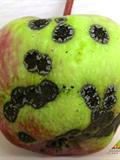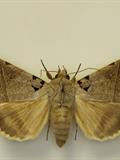Submitting plant specimens

When collecting samples for analysis, please keep a few things in mind:
Examine the plant carefully. Symptoms may appear at some distance from the actual site of infection. Look for any irregularities or injuries on the lower portion of the plant.
Collect a sample that is representative of the condition in question.
It is important that you try to collect the sample prior to any pesticide applications - once pesticides have been applied, it may be difficult to obtain an accurate diagnosis.
The sample to be submitted should, when possible, contain all parts of the plant.
Include enough material showing the full range of development of the disease, from healthy to maximum disease development. Collect the sample from an area that shows early development of the problem, as areas, which contain mostly dead plant material, often contain a number of secondary organisms which complicates the identification of the primary pathogen. Try NOT to send dead plants.
Wrap samples in dry paper towelling, paper bags or clean newspaper (do NOT add water) and pack loosely in a plastic bag to prevent excessive drying.
Package all specimens securely in a sturdy container (Styrofoam container or cardboard boxes) to prevent crushing. Packing material such as newspaper can be added to prevent damage during transit.
Send only freshly collected samples and use the most rapid transit method. Diagnosis can be difficult, if not impossible, when delays result in extensive deterioration of the sample.
If the sample cannot be send to us promptly, keep it refrigerated or out of direct sunlight and/or heat.
Hints for specific plant material:
1. Fleshy fruits, roots, and tubers - wrap enough clean, absorbent material such as paper towelling to absorb any leakage. DO NOT place samples in plastic bags.
2. Woody plants - for smaller plants submit an entire plant. Enclose the roots and soil with a plastic bag. Canker, dieback etc. on trees or shrubs - cut the branch several centimetres beyond each end of the affected area, so as to include some healthy wood. Dead, deteriorating branches are often worthless as samples.
3. Turf - lift a section of the turf so that healthy grass, along with the margin and the central parts of the affected area, is included in the sample. Enclose the entire sample in a plastic zipper bag (do not add water). When collecting samples from more than one area, use separate bags.
4. Garden plants, green house plants - dig up (do not pull) complete plants, leaving roots and soil intact. Enclose the roots and soil with a plastic bag. Do not wrap the stem and leaves in plastic.
5. Virus testing – Collect symptomatic leaves, stems or the entire plant and place in a plastic bag. Do not let the leaves dry out, but do not add extra water. Leaves can be pressed between layers of paper towelling and then put in zipper plastic bag.
When submitting samples for diagnosis, please keep the following in mind:
A submitted sample must be of good quality and quantity and be submitted with the relevant completed Disease Diagnosis form (available on our Web site)
Provide as much information on the form(s) as possible to ensure an accurate diagnosis of the problem.
Be sure you include the form with your sample. You may also want to keep one copy of the form for your records.
For faster response, include your e-mail address and indicate how you would prefer to receive the results.
Samples are typically processed on a first come, first served basis.
A report (results and control measures) will be e-mailed, faxed or posted as soon as the results are finalised.
An invoice will be send with the report or soon thereafter.
Courier the sample as fast as possible. Possible couriers include:
Sun Courier, XPS, DHL, TNT.
NB:
There is no courier delivery at the University of Stellenbosch over weekends or on public holidays. To ensure your sample get processed as soon as possible, collect and send samples to reach us not later than the Friday morning of a regular week. During weeks with public holidays, please call in advance to make arrangements.
Please feel free to call the clinic with any questions prior to your sample submission.
Submitting Insect Specimens

Collecting samples:
Collect fresh material into a crush-proof container and, if possible, freeze the specimen as soon as possible.
Care should be taken to package the insects so they arrive intact. Do not tape insects to paper or place them loose in envelopes.
Label with the date and place of collection and the name of the collector. Supply any biological information, for example the host plant etc…
Submit the sample as soon as possible.
Correct handling of samples will ensure that a more accurate identification can be made.
Please complete an insect submission form along with the specimen, which will ensure that you receive prompt feedback.

